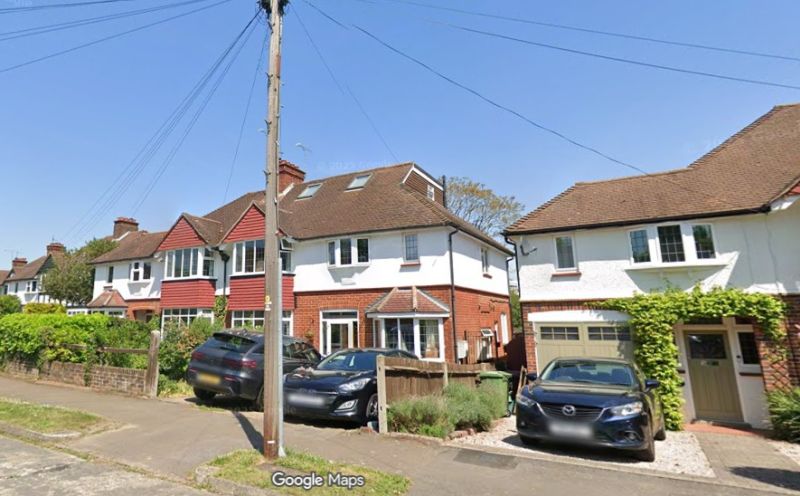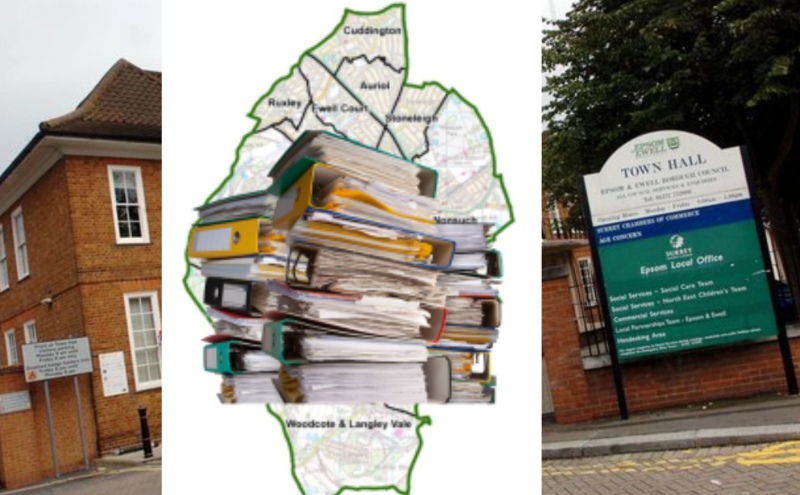Epsom and Ewell’s Draft Local Plan goes to Full Council
The Licensing and Planning Policy Committee (LPPC) of Epsom and Ewell Borough Council met on 20th November 2024 to consider the draft Regulation 19 Local Plan amid a storm of public opposition and internal division. The meeting, attended by residents and a significant complement of councillors, highlighted the deep tensions over the inclusion of Green Belt sites for development.
After nearly seven years of delays, the draft Local Plan was endorsed by the LPPC, sending it to the Full Council for final approval in December. However, the debate exposed significant disagreement among councillors about the cost of achieving housing targets and the risk of sacrificing valued green spaces.
Public Pleas to Save the Green Belt
Three public speakers opened the meeting, delivering impassioned critiques of the draft Local Plan. Janice Baker accused councillors of abdicating their responsibility by deferring to officers’ recommendations. Quoting directly from the meeting papers, she said, “Paragraph 3.46 states that removing Green Belt sites would significantly increase the risk of the plan being found unsound. In other words, you’re being told not to think about changes. But I ask: where is democracy in this process? Stand up for residents, stand up for your duties.”
Tim Murphy, a member of the Council for the Protection of Rural England, highlighted Horton Farm’s ecological and strategic importance, labelling it “one of the highest-performing Green Belt sites in the borough.” He challenged the committee directly: “The decision lies with you, not officers, not inspectors. You will be held responsible by residents for either protecting or destroying our Green Belt.”
Finally, Yvonne Grunwald reminded councillors of the 11,000-signature petition submitted during the Regulation 18 consultation. “Eighty-seven percent of residents opposed building on the Green Belt,” she said. “What happened to their voices? This plan will forever change the borough’s character.”
Councillor Perspectives: Frustration, Reluctance, and Division
The councillors’ deliberations revealed starkly contrasting views, with many expressing unease about the Local Plan but accepting its necessity. Chair Cllr Peter O’Donovan (RA Ewell Court) opened by praising the officers’ efforts, describing the plan as a delicate balance. “Our task,” he said, “is to tread carefully between safeguarding the borough’s unique character and ensuring future generations can thrive.”
However, dissenting voices were prominent. Cllr Christine Howells (RA Nonsuch) passionately opposed the inclusion of Horton Farm and Hook Road Arena. “This is our Green Belt,” she argued. “Once it’s lost, there’s no going back. Horton Farm is a critical environmental buffer and a floodplain. Its removal would set a precedent for the destruction of every other Green Belt site.”
Cllr Robert Leach (RA Nonsuch) expressed broader discontent with the central government’s housing targets. “Epsom has a population density five times the national average,” he said. “Why must all the burden fall on us? We’re being treated as a branch office for Westminster, not as an independent council.”
In contrast, Cllr Clive Woodbridge (RA Ewell Village) reluctantly supported the plan, acknowledging the compromises it entailed. “I wrestled with this decision,” he admitted. “Horton Farm is high-performing Green Belt, but without it, the plan will almost certainly be found unsound. If we exclude it, speculative developments could wreak havoc across the borough.”
Motions and Proposals: Protecting the Green Belt
Cllr Neil Dallen (RA Town) questioned the land allocated for Gypsy and Traveller sites, suggesting higher densities to reduce the footprint. “If we increase the density from 16.5 to 25 or 30 per hectare, could we not meet the full need on a smaller site?” he asked. Planning Policy Manager Ian Mawer responded, explaining that the lower density reflects cultural and practical requirements for Gypsy and Traveller communities, including space for caravans, vehicles, and utility blocks.
Cllr Julie Morris (LibDem College) called for stronger environmental commitments, particularly around climate change and biodiversity. “Why are climate and biodiversity issues always buried at the end?” she asked. “These should be front and centre of the plan.”
Meanwhile, Cllr Kieran Persand (Conservative Horton) vehemently opposed the inclusion of Horton Farm. “This is not a balanced plan,” he declared. “Including Horton Farm doesn’t protect other Green Belt sites—it puts them at greater risk. The planning inspector will see this as justification to include more Green Belt land.”
Despite these objections, motions to remove Horton Farm and other Green Belt sites were defeated, with officers warning that such changes would undermine the plan’s soundness. “Without Horton Farm, we simply cannot meet housing needs or provide Gypsy and Traveller pitches, which are legal requirements,” said Ian Mawer.
Difficult Decisions: Reluctant Support for the Plan
As the debate continued, councillors wrestled with the plan’s broader implications. Cllr Phil Neale (RA Cuddington), reflecting the prevailing mood, said, “None of us like this plan, but what’s the alternative? Without an up-to-date Local Plan, we’re at the mercy of speculative developments. We cannot afford to start from scratch.”
Cllr Woodbridge echoed this sentiment, emphasizing the risks of delay. “This plan is far from perfect, but it’s the best chance we have to protect the majority of our Green Belt while meeting our obligations. If we fail, the consequences could be far worse.”
However, not all councillors were resigned to compromise. Cllr Persand insisted that rejecting the plan would force the council to find alternative solutions. “We don’t have to accept this bad plan,” he argued. “There is still time to come up with something better.”
Press Release and Public Reaction
Following the vote, EEBC issued a press release reiterating the importance of adopting the Local Plan. “The Proposed Submission Local Plan strikes the optimal balance between development and preservation,” said Cllr O’Donovan. “It will deliver affordable housing, protect biodiversity, and secure infrastructure improvements while safeguarding the majority of the borough’s Green Belt.”
The press release also emphasized the risks of not adopting a plan, including unplanned and speculative developments. Residents were encouraged to participate in the upcoming Regulation 19 consultation, set to begin in early 2025.
Public reaction, however, remains overwhelmingly critical. Campaigners accused the council of ignoring residents’ views and bowing to government pressure. “This is not a balanced plan,” said Janice Baker. “It’s a capitulation.”
Looking Ahead: Full Council Debate
The draft Local Plan now moves to the Full Council for debate on 10th December 2024. With opposition among councillors and residents showing no signs of abating, the future of Epsom’s Green Belt hangs in the balance.
While some see the plan as a necessary compromise, others view it as a betrayal of the borough’s character and environmental heritage. The upcoming Full Council meeting promises to be as contentious as the LPPC debate, as Epsom grapples with the challenge of balancing growth and preservation.















